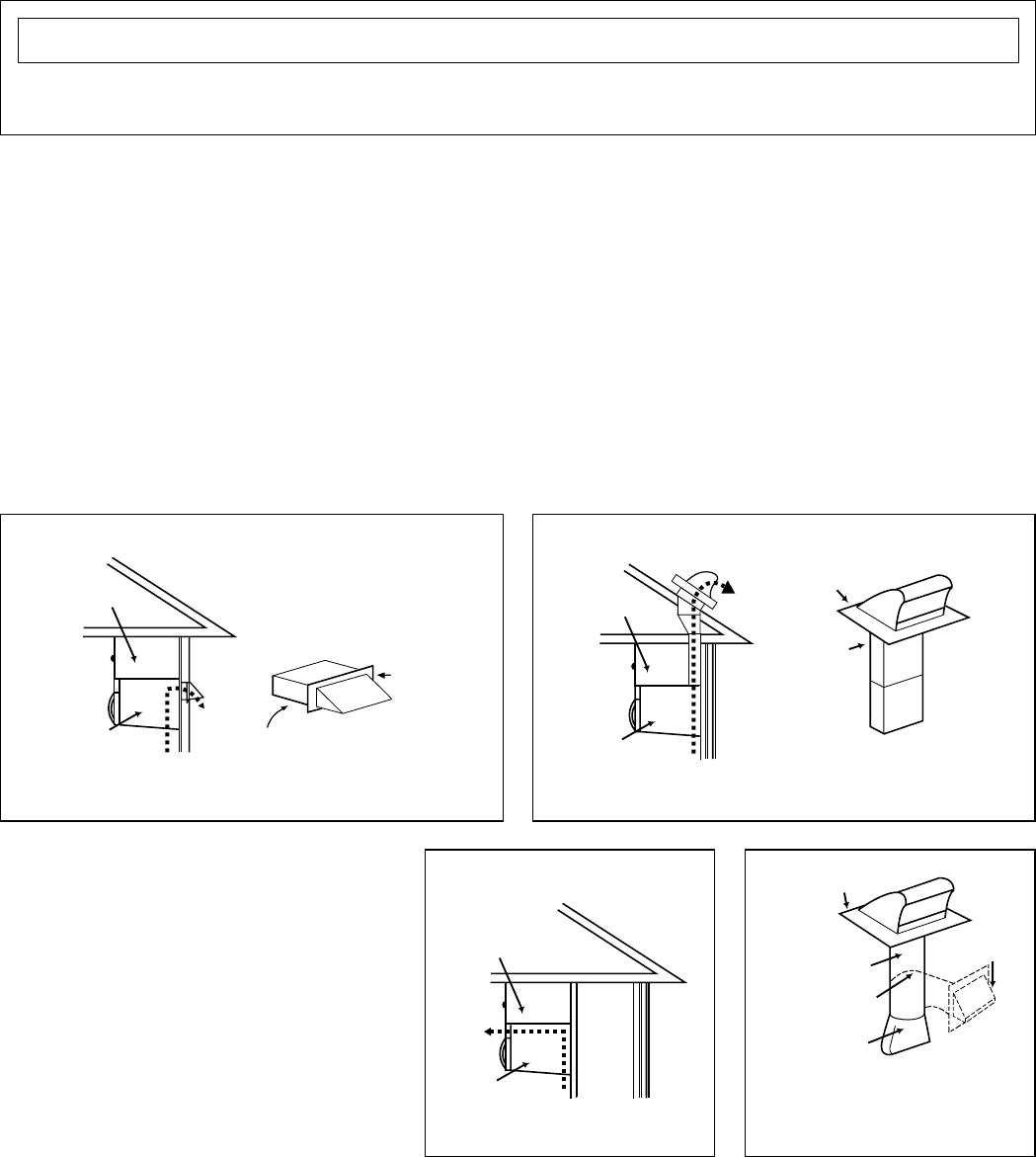STEP 2: PREPARE THE VENTING SYSTEM
NOTE: The ductwork you need for outside ventilation is not included with your oven. The standard ductwork fittings
and length are shown in Figure 9.
You may vent your oven in one of three ways. However, do NOT vent into a wall cavity, an attic, or an unused area.
Roof-venting If your oven is located on an outside wall near the roof, as in Figures 6 (3
1
/4" x 10" duct) and Figure 8
(6" round duct.)
Wall-venting If your oven is located on an outside wall of your house, as in Figure 5 (3
1
/4" x 10" duct) and Figure 8 (6"
round duct.)
Room-venting If your oven is located on an inside wall of your house, as in Figure 7.
NOTE: If you choose the rear exhaust method (roof-or wall-venting), be sure there is enough clearance within the
wall for the exhaust duct.
• DO NOT exhaust air into a wall, ceiling or a
concealed space of a building.
• DO NOT install 2 elbow fittings next to each
other. This creates unusual air patterns and
can result in poor ventilation.
• ALWAYS vent outside. Do not vent into an
attic or crawlspace.
• Seal all joints in venting system with duct
tape to avoid smoke or odor in home.
• DO NOT use laundry wall caps.
INSTALLATION
12
6" min.
